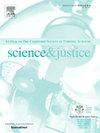Scientific imperialism : “The judge made me do it!”
IF 1.9
4区 医学
Q2 MEDICINE, LEGAL
引用次数: 0
Abstract
This commentary critically reviews a recently published discussion between Hahn et al. (2023) and Berger et al. (2023) regarding recommendations for the use of probabilistic genotyping systems in criminal proceedings, in particular the proper understanding for the evidentiary use – across legal systems – of results produced by such systems and the communication of system outputs to the judiciary. We find that the exchange between Hahn et al. (2023) and Berger et al. (2023) reveals a profound divide between diametrically opposed positions, which is symptomatic of a lack of clarity in some quarters of forensic science about the role of expert witnesses and, in particular, novel forms of so-called machine-generated evidence in the legal process. We argue that in order to prevent scientific practices from inappropriately invading judicial territory, lawyers should take a more active role in scrutinising recommendations and position statements published by members of the forensic science community.
科学帝国主义:“法官让我这么做的!”
这篇评论批判性地回顾了Hahn等人(2023)和Berger等人(2023)最近发表的关于在刑事诉讼中使用概率基因分型系统的建议的讨论,特别是对这种系统产生的结果的证据使用的正确理解-跨法律体系-以及系统输出与司法机构的沟通。我们发现,Hahn et al.(2023)和Berger et al.(2023)之间的交流揭示了截然相反的立场之间的深刻分歧,这是法医学某些领域对专家证人的作用缺乏清晰度的症状,特别是在法律程序中所谓机器生成证据的新形式。我们认为,为了防止科学实践不恰当地侵入司法领域,律师应该在审查法医科学界成员发表的建议和立场声明方面发挥更积极的作用。
本文章由计算机程序翻译,如有差异,请以英文原文为准。
求助全文
约1分钟内获得全文
求助全文
来源期刊

Science & Justice
医学-病理学
CiteScore
4.20
自引率
15.80%
发文量
98
审稿时长
81 days
期刊介绍:
Science & Justice provides a forum to promote communication and publication of original articles, reviews and correspondence on subjects that spark debates within the Forensic Science Community and the criminal justice sector. The journal provides a medium whereby all aspects of applying science to legal proceedings can be debated and progressed. Science & Justice is published six times a year, and will be of interest primarily to practising forensic scientists and their colleagues in related fields. It is chiefly concerned with the publication of formal scientific papers, in keeping with its international learned status, but will not accept any article describing experimentation on animals which does not meet strict ethical standards.
Promote communication and informed debate within the Forensic Science Community and the criminal justice sector.
To promote the publication of learned and original research findings from all areas of the forensic sciences and by so doing to advance the profession.
To promote the publication of case based material by way of case reviews.
To promote the publication of conference proceedings which are of interest to the forensic science community.
To provide a medium whereby all aspects of applying science to legal proceedings can be debated and progressed.
To appeal to all those with an interest in the forensic sciences.
 求助内容:
求助内容: 应助结果提醒方式:
应助结果提醒方式:


